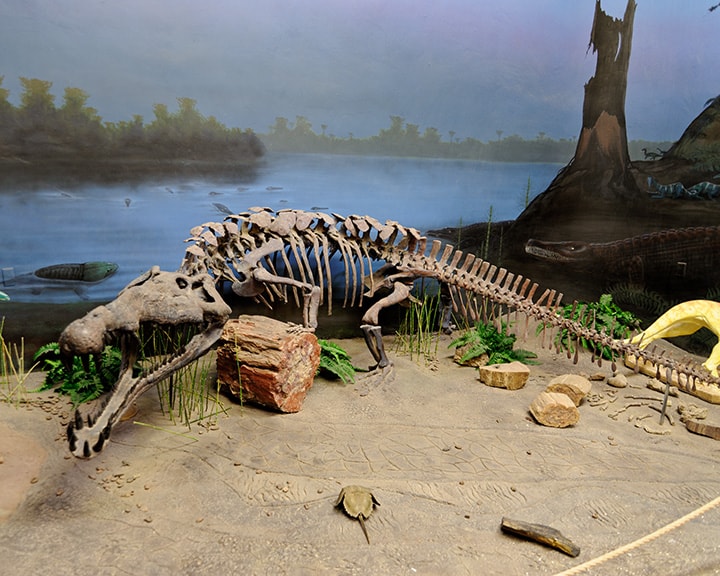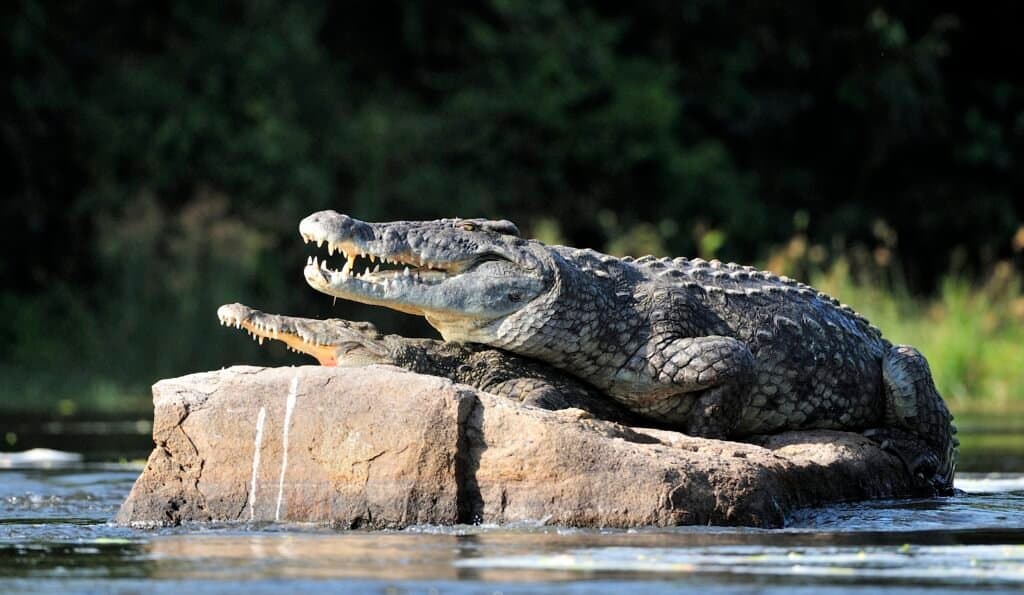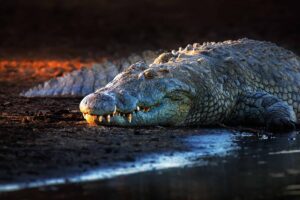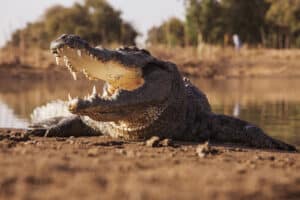Crocodiles are large reptiles that kill hundreds or thousands of people every year. While they’re still evolving, crocodiles are ancient-looking, seemingly perfect killing machines. You might think they haven’t undergone any major changes since dinosaurs roamed the planet, but if we look at the oldest crocodile fossil ever found, we can see that this group of reptiles has undergone some major changes.
Let’s take a look at the oldest fossils of both modern crocodiles as well as their ancestors. We’ll show you how long these creatures have roamed the planet and where their fossils have been found.
What Is the Oldest Crocodile Relative?
The history of crocodiles stretches back about 250 million years to the lower Triassic. Before true crocodiles emerged, they were descended from archosaurs. One of the oldest archosaurs was Xilousuchus, a creature that lived 250 million years ago. Meanwhile, Doswellia kaltenbachi is another archosauriform that lived about 230 million years ago and bore close similarities to modern crocodiles.

The phytosaur lived during the Late Triassic Period.
©720 × 576 pixels, file size: 228 KB, MIME type: image/jpeg – License
However, about 228 million years ago, the Phytosaur appeared. This reptile looked remarkably similar to the crocodiles that we know today. Some of the main differences between Phytosaur and our modern crocodiles include the location of their nostrils near the eyes, ankle structure, and a bony secondary palate that helps modern crocodiles breathe with a mouth filled with water.
Both reptiles would be a good starting point when considering the oldest crocodile relatives. Yet, we have to look much nearer in time to figure out when the crocodiles that we know today first came about.
When Did Modern Crocodiles First Appear?
Modern crocodiles first appeared about 25 to 50 million years ago after they diverged from the Voay genus, the closest relatives of crocodiles at the time. Scientists believe that the first members of the Crocodylus genus came from Africa and then spread through Southeast Asia and eventually to the Americas.
Some people fall into the trap of thinking that there are no differences between the ancient crocodiles and the modern crocodiles that we know today. While modern interpretations of ancient crocodiles may look the same, many parts of their bodies, have changed. However, not all changes remained through time, like the shape of their skulls.
A recent study found that tangentially related crocodilians, namely the Nile crocodile and Morelet’s crocodile, evolved to have very similar skull shapes. Basically, crocodiles seem older than they are because their bodies keep evolving in a very limited number of ways. Keep in mind that these changes happen over millions of years.
Scientists have difficulty pinpointing the exact arrival of every modern crocodile species. Yet, we can look at the existing fossil records to understand when modern crocodiles first appeared.
How Old Was the Oldest Crocodile Fossil Found?

Some studies suggest crocodiles are evolving more rapidly now than in the past.
©Naypong Studio/Shutterstock.com
The oldest crocodile fossil ever found was from the archosauriform Xilousuchus. This animal lived during the Early Triassic period, about 250 million years ago. This creature preceded modern crocodiles and had many features we would identify as crocodilians today.
This reptile lived in the swampy areas of eastern Asia. Xiao-Chun Wu discovered the first fossils in 1981 in the Heshanggou Formation. The fossils consisted of a partial skeleton and skull.
Based on the fossils, scientists estimated that this creature grew between three and four meters in length in total. Interestingly, this reptile also had a sail on its back. This feature would have made the animal look like a mix between a modern crocodile and a dinosaur.
Until recently, scientists believed the Portugalosuchus azenhae to be one of the oldest crocodiles. This reptile lived about 95 million years ago. However, recent studies in 2022 found that this creature was not a member of Crocodylia. Instead, scientists concluded that it was a member of Allodaposuchidae. As a result, we can’t consider this creature the oldest crocodile relative.
How Old Was the Oldest Modern Crocodile Fossil Ever Found?

was believed to have lived during the same time as the Nile crocodiles.
©iStock.com/USO
The fossils of true crocodiles were about 2.6 to 5.3 million years old. These fossils belonged to the saltwater crocodile, the largest extant species in the world today.
Other fossils have been found as well, like those of Crocodylus thorbjarnarsoni. Researchers believe this crocodile lived 2 to 5 million years ago and was one of the largest true crocodiles ever.
While Deinosuchus and Sarcosuchus were very large creatures, they’re merely relatives of modern crocodiles. So, finding Crocodylus thorbjarnarsoni was quite exciting for researchers because it lived during the same time as saltwater and Nile crocodiles but measured longer than both at 25 feet.
What Did the Oldest Crocodile Fossil Teach Us?
Crocodile fossils have taught humans many lessons about these animals. For example, one set of fossils from Crocodylus checchiai has made scientists rethink what they know about the way crocodiles spread throughout the world. Based on one report, some crocodiles may have originated in Australia and then spread to Africa before swimming across the Atlantic Ocean to the Americas.
If those findings are confirmed, it could upend our current knowledge of how crocodiles spread worldwide. As previously said, some scientists believe that the creatures originated in Africa and then radiated outward. After all, it seems easier to get from Southeast Asia to the Americas than from Africa to the Americas.
As this debate progresses and more evidence becomes available, we’ll continue to learn about how crocodiles have spread worldwide.
The oldest crocodile fossils are also important when discussing the nature of evolution itself. Some people think that crocodiles have stopped evolving altogether since they hit some sort of natural apex. Yet, science has studied their fossils and discovered that they are still evolving. Some studies suggest they’re evolving more rapidly now than in the past.
As humans learn more about crocodiles from their fossils, we’ll be able to piece together their origins.
Up Next:
- What’s the Oldest Alligator Fossil Ever Found?
- What’s the Oldest Elephant Fossil Ever Found?
- What’s the Oldest Wolf Fossil Ever Found?
- What Is the Oldest Whale Fossil Ever Found?
The photo featured at the top of this post is © Wirestock Creators/Shutterstock.com
Thank you for reading! Have some feedback for us? Contact the AZ Animals editorial team.






